Shown in the figure is a system of three particles of mass 1kg,2kg and 4kg connected by two springs. The acceleration of A.B and C at any instant are 1ms−2,2ms−2 and 1/2ms−2 respectively directed as shown in the figure external force acting on the system is
1N
7N
3N
none of these
The correct Answer is:C
To solve the problem, we need to find the external force acting on a system of three particles connected by springs. The given masses and their respective accelerations are as follows:
- Mass mA=1kg with acceleration aA=1m/s2
- Mass mB=2kg with acceleration aB=2m/s2
- Mass mC=4kg with acceleration aC=0.5m/s2
1. Calculate the Total Mass of the System:
mtotal=mA+mB+mC=1kg+2kg+4kg=7kg
2. Calculate the Center of Mass Acceleration:
The acceleration of the center of mass acm can be calculated using the formula:
acm=mA⋅aA+mB⋅aB+mC⋅aCmtotal
Substituting the values:
acm=(1kg⋅1m/s2)+(2kg⋅2m/s2)+(4kg⋅0.5m/s2)7kg
=1+4+27=77=1m/s2
3. Calculate the External Force Acting on the System:
According to Newton's second law, the external force Fexternal can be calculated as:
Fexternal=mtotal⋅acm
Substituting the values:
Fexternal=7kg⋅1m/s2=7N
Final Answer:
The external force acting on the system is 7N.
---
- Mass mB=2kg with acceleration aB=2m/s2
- Mass mC=4kg with acceleration aC=0.5m/s2
mtotal=mA+mB+mC=1kg+2kg+4kg=7kg
The acceleration of the center of mass acm can be calculated using the formula:
acm=mA⋅aA+mB⋅aB+mC⋅aCmtotal
Substituting the values:
acm=(1kg⋅1m/s2)+(2kg⋅2m/s2)+(4kg⋅0.5m/s2)7kg
=1+4+27=77=1m/s2
According to Newton's second law, the external force Fexternal can be calculated as:
Fexternal=mtotal⋅acm
Substituting the values:
Fexternal=7kg⋅1m/s2=7N
The external force acting on the system is 7N.
Topper's Solved these Questions
- BOOK - CENGAGE PHYSICS ENGLISHCHAPTER - CENTRE OF MASSEXERCISE - Multiple Correct25videos
CENTRE OF MASS
- BOOK - CENGAGE PHYSICS ENGLISHCHAPTER - CENTRE OF MASSEXERCISE - Assertion - Reasoning2videos
CENTRE OF MASS
- BOOK - CENGAGE PHYSICS ENGLISHCHAPTER - CENTRE OF MASSEXERCISE - Subjective23videos
CENTRE OF MASS
- BOOK - CENGAGE PHYSICS ENGLISHCHAPTER - CALORIMETRYEXERCISE - Solved Example13videos
CALORIMETRY
- BOOK - CENGAGE PHYSICS ENGLISHCHAPTER - DIMENSIONS & MEASUREMENTEXERCISE - Integer2videos
DIMENSIONS & MEASUREMENT
Similar Questions
Three small balls of masses 1kg, 2kg and 3kg are moving in a plane and their velocities are 1ms−1,2ms−2and3ms−1 respectively as shown . The total angular momentum of the system of three balls about point P at the given instant of time is
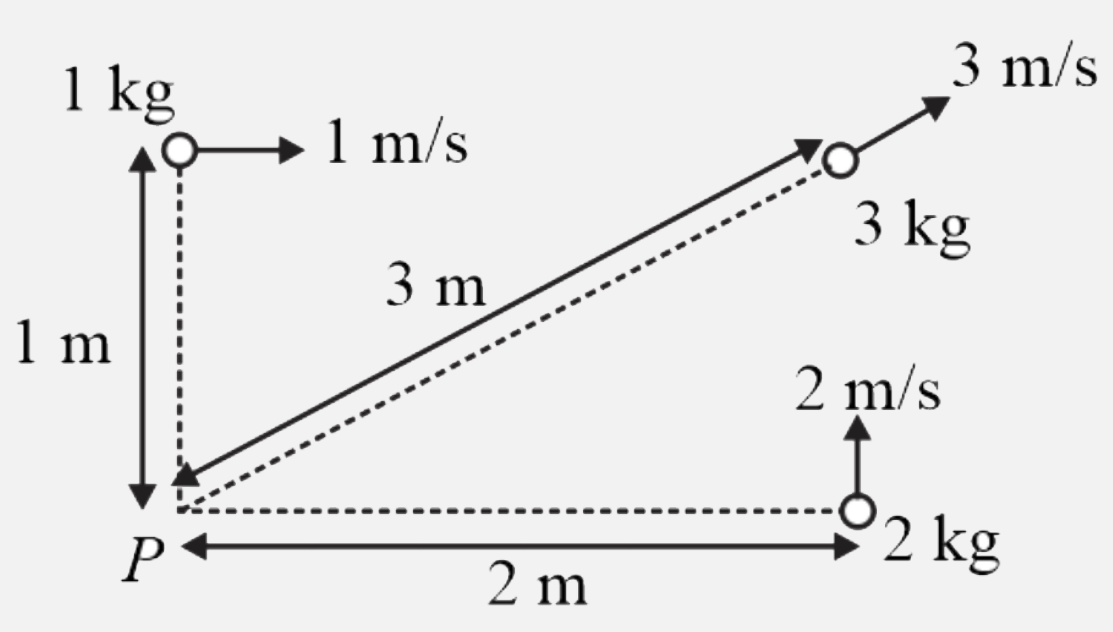 View Solution
View SolutionThree particles of masses 1kg,2kg and 3kg are situated at the corners of an equilateral triangle move at speed 6ms−1,3ms−1 and 2ms−1 respectively. Each particle maintains a direction towards the particles at the next corners symmetrically. Find velocity of CM of the system at this instant
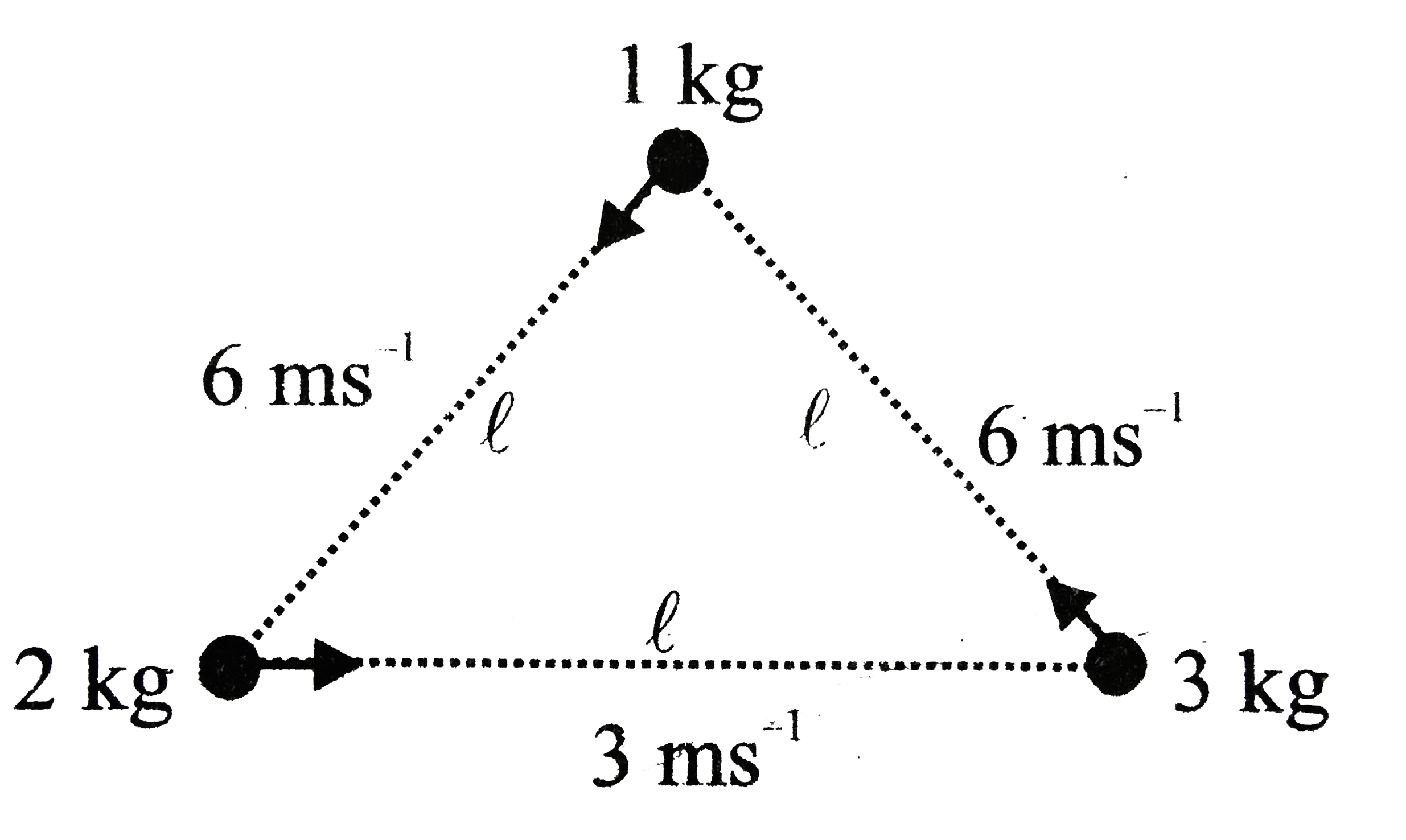 View Solution
View Solution
Knowledge Check
- Question 1 - Select One
In the system shown in the figure, the acceleration of 1 kg mass is
 Ag4downwardsBg2downwardsCg2upwardsDg4upwards
Ag4downwardsBg2downwardsCg2upwardsDg4upwards
Two particles of masses 2 kg and 4 kg are approaching each other with acceleration 1ms−2 and 2ms−2, respectively, on a smooth horizontal surface. Find the acceleration of center of mass of the system.
View SolutionTwo particles are thrown simultaneously from points A and B with velocities u1=2ms−1andu2−14ms−1, respectively, as shown in figure.
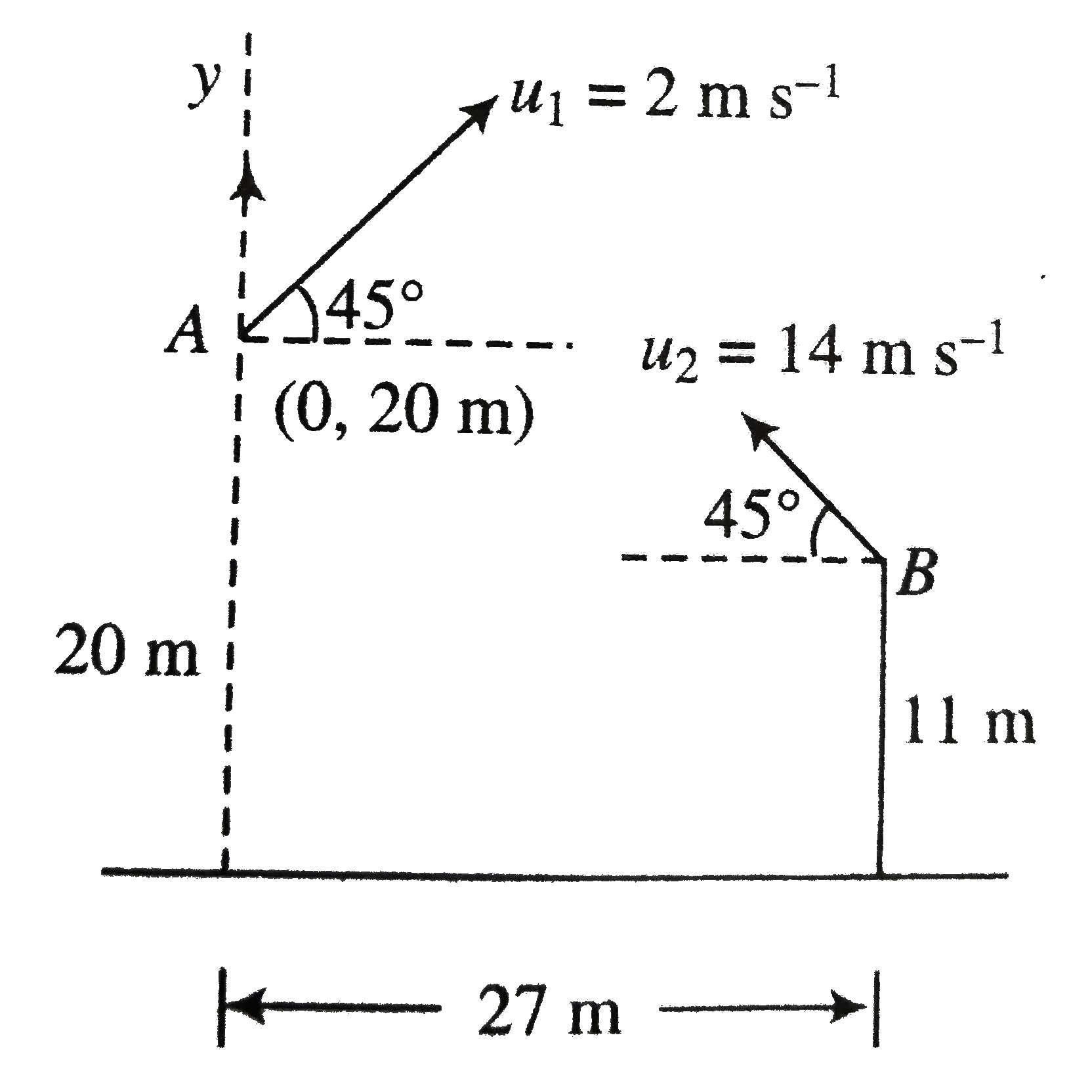
Minimum separation between A and B isView SolutionTwo particles are thrown simultaneously from points A and B with velocities u1=2ms−1andu2−14ms−1, respectively, as shown in figure.

The relative velocity of B as seen from A inView SolutionIn the adjacent figure, mass of A, B and C are 1 kg , 3 kg and 2 kg, respectively. Find
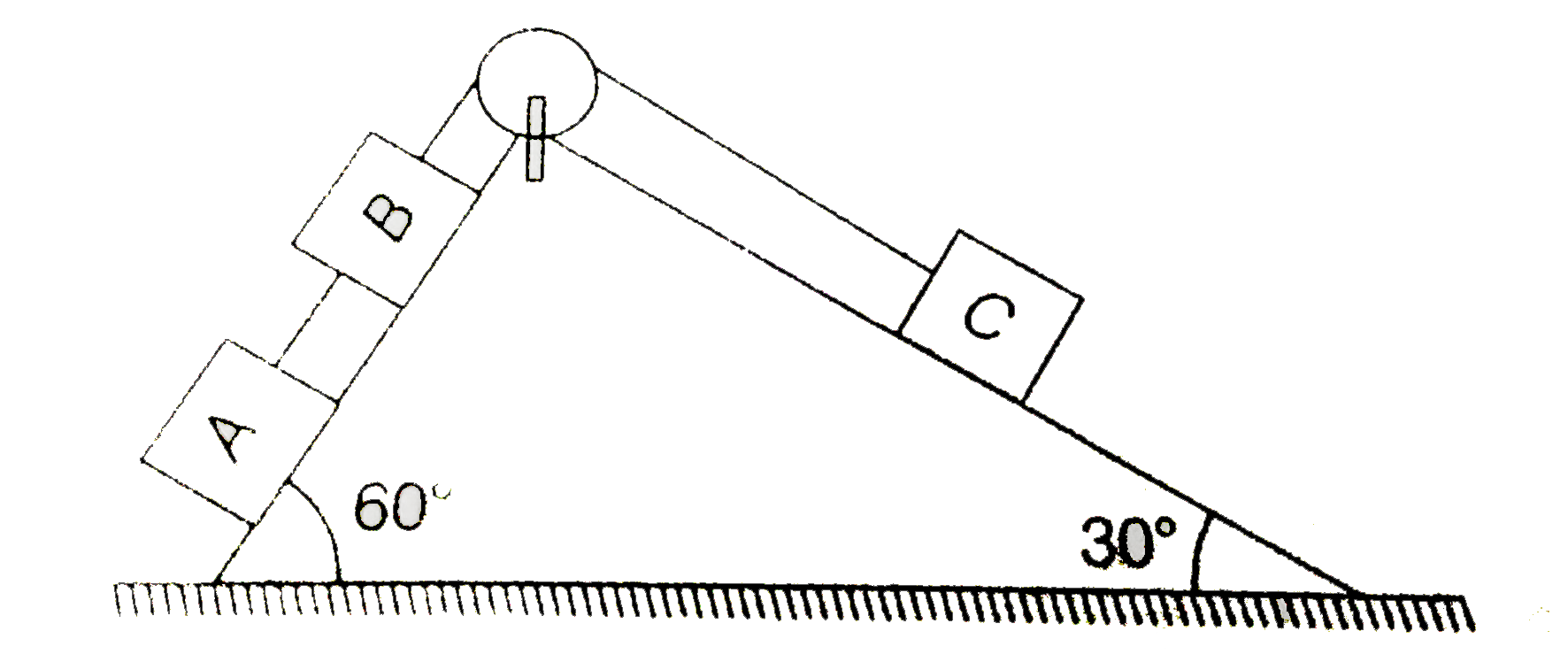
(a) the acceleration of the system, and
(b) tensions in the string .
Neglect friction. (g=10ms−2)View SolutionIn the adjacent figure, mass of A, B and C are 1 kg , 3 kg and 2 kg, respectively. Find

(a) the acceleration of the system, and
(b) tensions in the string .
Neglect friction. (g=10ms−2)View SolutionIn the adjacent figure, mass of A, B and C are 1 kg , 3 kg and 2 kg, respectively. Find

(a) the acceleration of the system, and
(b) tensions in the string .
Neglect friction. (g=10ms−2)View SolutionA 20kg blocks is placed on of 50kgblock as shown in figure An horizontal force F acting on A causes an acceleration of 3ms−2 to A and 2ms−2 to B as shown in the figure for this situation mark out the corect statement(s)
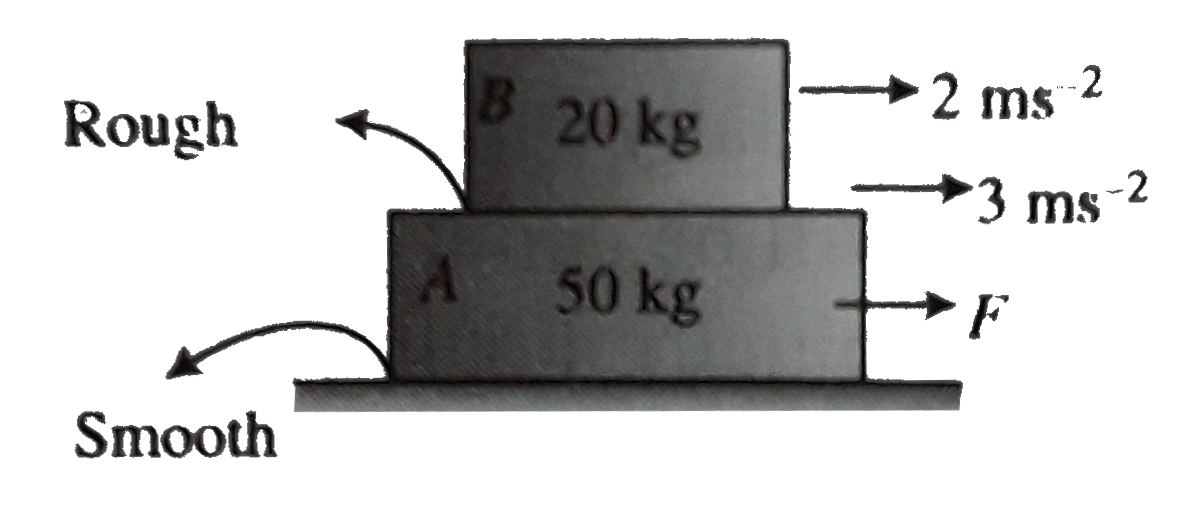 View Solution
View Solution

